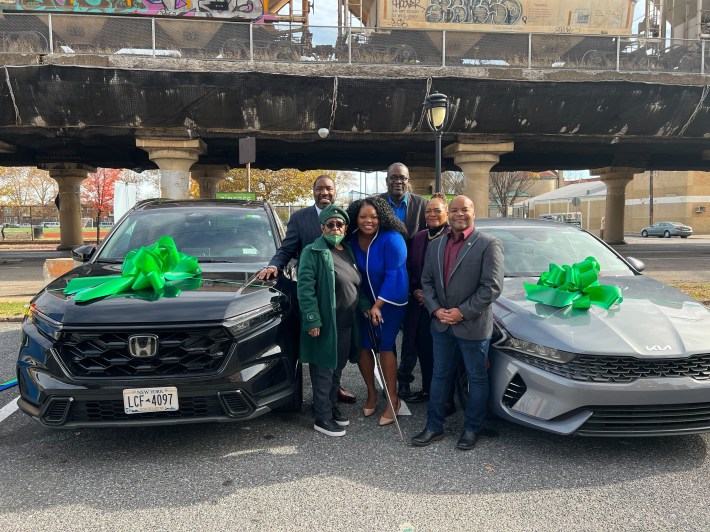With help, they could call it car-fair.
Car-share programs have a vast potential to reduce car ownership among the people who can least afford the increasingly onerous cost of owning a vehicle, but subsidies need to be high and the coverage area needs to be large in order to maximize the benefit, a new report shows.

A team of researchers made that conclusion after analyzing Los Angeles's "BlueLA" car-share program, which did indeed "increase transportation access for low-income travelers," but only due to "reduced-rate pricing," the report found.
The program was limited by its small footprint, the study added.
There's no question that car-share has shown potential in helping urban areas reduce automobile ownership and lower vehicle miles traveled, as well as increasing walking and public transit use. But other studies have shown that urban car-share members are disproportionately white, even when vehicles are located in neighborhoods with many disadvantaged residents.
To fix that, BlueLA set up its docks in areas where many residents could not afford to purchase vehicles, plus offered lower rates.
"We want people to shed cars and the best way to do that is to make sure that if they do need a car, car share is there for them," Miriam Pinski, a co-author of the report, told Streetsblog. "That subsidy makes it more accessible for lower-income people."
BlueLA is what's known as a point-to-point car-share system, meaning people can pick up the car wherever it is parked, use it for any amount of time, and then leave it somewhere else in the zone. But during the study period, BlueLA stations "only served a small portion of the city of Los Angeles," the report said, reducing transportation access for people who don't own cars, but would have liked to have used BlueLA.
Hence the conclusion of the study: "The fact that private car-share companies tend to site their services near higher-income residents illustrates the financial challenges that service providers may have serving low-income neighborhoods."
So maybe car-share can't meet all transportation needs, but "subsidized car-sharing — particularly targeted to central-city neighborhoods — may address some accessibility needs of low-income households without imposing the burdens of automobile ownership," the report concluded.
There are other equity models. The Philadelphia Housing Authority has just inked a deal that will bring two Zipcars to each of four housing projects. The company, which operates in dozens of cities and on college campuses, thinks the plan will reduce existing car ownership amount lower-income residents as well as ward off purchases of cars.
Zipcar uses a "round-trip" model, meaning the cars are picked up and left at the same place.
The New York City Housing Authority similarly partnered with Zipcar to give residents free membership for a year, followed by a reduced price membership in succeeding years. As a result, the use of hourly rental cars soared among lower-income residents. Before the start of the program, wealthy New Yorkers were overrepresented, according to a city report. But after the pilot program, the percentage of New Yorkers who used the program but reported making less than $50,000 a year doubled.
Angelo Adams, the company's boss, told Streetsblog that the presence of a Zipcar eliminated 13 privately owned cars, either in cars sold or members saying they put off buying a car.

"Forty-seven percent of our members have postponed buying or leasing a car," Adams said. "So we see ourselves as a means to fuel multimode transportation. When they use Zipcar, they also use bikes and public transportation."
Pinski said her research suggests that car-share should be broader based than merely in public housing complexes.
"I wouldn't restrict a car-share service only to certain eligible low-income people," she said. "There are a lot of low-income people who aren't living in public housing that would still benefit from car share for when they need a car. It's so costly to own a car, but our built environment makes us so dependent on them."
And therein lies the biggest challenge for car-share: It's not the perfect mode for every traveler — and 22 percent of low-income households in America do not have access to a car.
"Car-share systems do not serve all trip purposes — particularly the work commute — well," the report said. "Most users relied on a robust set of alternatives, including public transit, walking, and [Uber and Lyft]. Planners should thus implement car-share programs in neighborhoods where evidence suggests that the service works well, such as low-income urban neighbor- hoods with limited on-street parking and a diverse set of existing transportation services."






